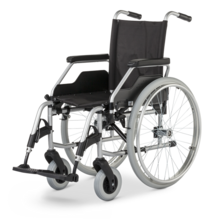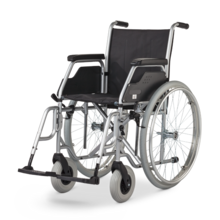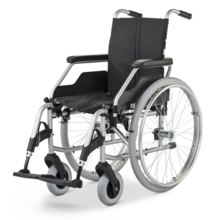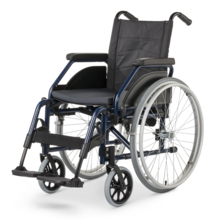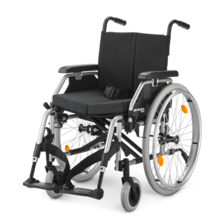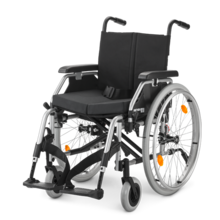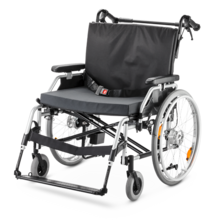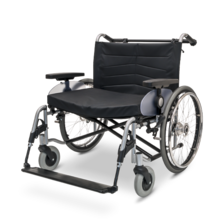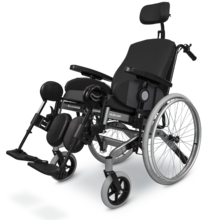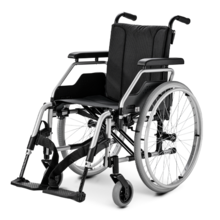Takes into consideration illnesses and disabilities of older people who are multi-dimensionally limited in health and self-care. Interaction develops between the areas of body, mind and surroundings * Very often only low resources exist of muscular strength. In addition to the interference of mobility, there are also often other illnesses limiting the activity, for example, joint disease or reduced heart-lung function.
Wheelchair requirements
- The mobility and active movability of the user must be encouraged.
- Bad posture must be avoided.
- Adaptation to the individual functional restrictions must be ensured (remaining mobility, strength reduction, degree of torso stability must be included).
- Potentially support through equipment variations for positioning of amputated or paralyzed limbs.
- Choice of individual backrest variations (e.g. adaptable seat strap for spine deformities like kyphosis / scoliosis).
- Different seat heights for 'wheelchair walking' or 'shuffling'.
- Manoeuvrable with little strength.
- Functional accessories for accompanying persons to allow them to easily and safely operate the wheelchair (e.g. during pushing, braking or loading into a vehicle).
- All locking devices should be clearly identifiable for the safety of the user and the accompanying person.
- Mobility by car by way of easy folding/unfolding, low weight and easy loading of the wheelchair

